Madagascar Destination Guide
This essential guide will help you prepare for an unforgettable journey through Madagascar, the world's fourth-largest island and a biodiversity hotspot.
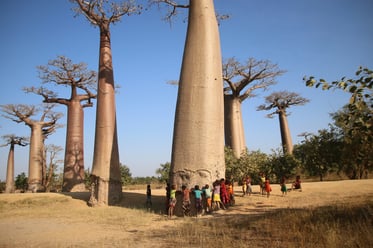
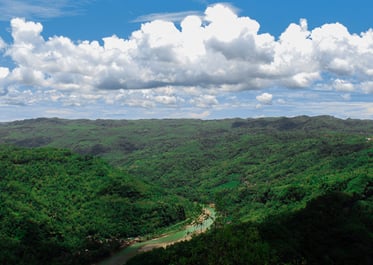
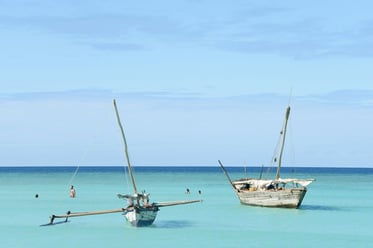
Travel Disclaimers
Important information about traveling in Madagascar
Be prepared for extremely rough, bumpy roads throughout Madagascar. Travel times between destinations are often longer than expected due to poor infrastructure. Four-wheel drive vehicles are essential for many routes, and some areas become inaccessible during the rainy season (November-March).
Madagascar is one of the world's poorest countries with significant economic challenges. Visitors will encounter poverty, especially in rural areas. Please be respectful and mindful when taking photographs. Consider supporting local communities by using local guides, purchasing handcrafted souvenirs, and supporting responsible tourism initiatives.
Outside major cities, accommodations may be basic with limited amenities. Expect occasional power outages, limited hot water, and basic facilities in rural areas. Bring a portable charger, flashlight, and any essential personal items you may need.
Essential Travel Information for Madagascar
Everything you need to know before your Madagascar adventure
Visa & Entry Requirements
- Visa on Arrival: Most visitors can obtain a 30 or 60-day visa upon arrival at Antananarivo Airport.
- Passport Validity: Must be valid for at least six months beyond your departure date.
- Visa Fee: Approximately €35 for 30 days or €45 for 60 days (payable in euros or dollars).
- Health Requirements: Yellow fever certificate required if arriving from an infected area.
Currency & Payments
- Malagasy Ariary (MGA) is the official currency.
- Cash is King: Credit cards are rarely accepted outside major hotels in Antananarivo.
- ATMs: Limited to major towns and cities. Withdraw cash when available.
- Currency Exchange: Bring euros or US dollars in excellent condition for best rates.
Mobile & Internet
- SIM Cards: Telma, Orange, and Airtel offer prepaid SIMs. Purchase at the airport.
- WiFi: Limited to hotels and some restaurants in major towns. Often slow and unreliable.
- Power Adapters: Madagascar uses Type C, D, E, and J plugs at 220V.
Time Zone
- Madagascar follows East Africa Time (EAT) – UTC +3.
- Madagascar is 8 hours ahead of U.S. Eastern Time (EST), or 7 hours ahead during EDT.
Climate & Weather
- Tropical Climate: Hot and humid with distinct wet and dry seasons.
- Dry Season: April to October (best time to visit)
- Rainy Season: November to March (cyclones possible on east coast)
- Temperatures: Range from 20°C - 30°C (68°F - 86°F) year-round.
Emergency Contacts
- Police: 📞 117
- Ambulance: 📞 124
- Fire: 📞 118
- U.S. Embassy: 📞 +261 20 23 480 00
Packing Checklist for Madagascar
Use this checklist to ensure you pack everything you need for your Madagascar adventure
Travel Documents & Essentials
- Passport (valid for at least 6 months)
- Visa information (or cash for visa on arrival)
- Flight itinerary & proof of onward travel
- Travel insurance details (with evacuation coverage)
- Credit/debit cards and Cash (euros or US dollars in excellent condition)
- Yellow fever certificate (if applicable)
- International driver's license (if planning to drive)
- Travel wallet or money belt
- Copies of important documents (separate from originals)
- Emergency contact information
Clothing & Accessories
- Lightweight, breathable clothing (moisture-wicking)
- Long pants and long-sleeved shirts (for sun/mosquito protection)
- Hiking boots or sturdy walking shoes
- Sandals or flip-flops
- Rain jacket or poncho (especially during rainy season)
- Swimwear
- Hat with wide brim and sunglasses
- Light sweater or fleece (for cool evenings)
- Modest clothing for villages and cultural sites
- Quick-dry towel and bandana
Health & Safety
- Anti-malarial medication (consult your doctor)
- Prescription medications in original packaging
- Insect repellent with high DEET concentration
- Sunscreen (SPF 30+ and reef-safe)
- First-aid kit with bandages, antiseptic, etc.
- Hand sanitizer and wet wipes
- Water purification tablets or SteriPEN
- Anti-diarrheal medication and rehydration salts
- Motion sickness tablets (for rough roads)
- Toilet paper and tissues (not common in many areas)
Equipment & Gadgets
- Headlamp or flashlight with extra batteries
- Smartphone & charger
- Camera, extra memory cards & batteries
- Universal power adapter (Types C, D, E, J)
- Portable charger/power bank
- Binoculars (for wildlife viewing)
- Dry bag or waterproof cases for electronics
- Madagascar guidebook or downloaded information
- Offline maps (limited internet access)
- Reusable water bottle (1L minimum)
Packing Tips
- Bring essential medications as pharmacies are limited outside major cities.
- Consider packing donations such as school supplies if visiting rural communities.
- Pack a lightweight sleeping bag liner for less sanitary accommodations.
Top Destinations & Experiences
Discover the incredible places you'll visit during your Madagascar adventure
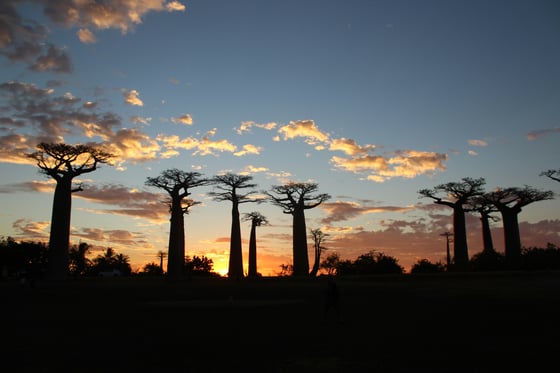
Avenue of the Baobabs
One of Madagascar's most iconic landscapes, these ancient baobab trees create a breathtaking natural alley stretching along a dirt road near Morondava.
Highlights:
- Sunset Photography – Capture the magical golden hour light.
- Baobab Species – See the rare Adansonia grandidieri baobabs.
- Local Culture – Visit nearby traditional Sakalava villages.
- Night Sky – Witness incredible stargazing opportunities.
Rainforests of Andasibe
This lush eastern rainforest is home to the indri, Madagascar's largest lemur known for its haunting whale-like calls that echo through the forest.
Forest Highlights:
- Indri Encounters – Hear and see these endangered lemurs.
- Night Walks – Spot nocturnal chameleons, frogs and lemurs.
- Vakôna Forest Lodge – Visit the famous "Lemur Island" sanctuary.
- Orchid Gardens – View hundreds of endemic orchid species.
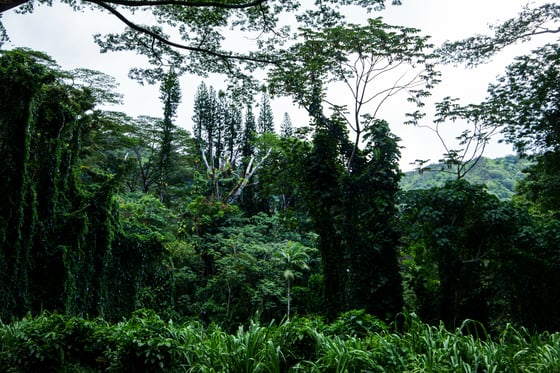
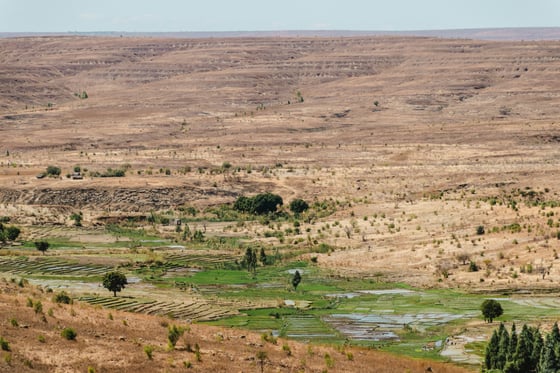
Isalo National Park
Madagascar's "Grand Canyon" features dramatic sandstone formations, deep canyons, and natural swimming pools surrounded by endemic plants and wildlife.
Park Highlights:
- Canyon des Singes – Hike through stunning rock formations.
- Natural Pools – Swim in crystal-clear natural pools like Piscine Naturelle.
- Ring-tailed Lemurs – Spot these iconic lemurs in their natural habitat.
- Stunning Sunsets – View the spectacular Isalo massif at sunset.
Must-Try Malagasy Foods
Madagascar's cuisine is a delicious blend of Southeast Asian, African, and European influences with rice (vary) as the staple food. Here are some dishes you shouldn't miss:
Romazava
National dish of meat stew with mixed greens and spices.
Ravitoto
Pounded cassava leaves cooked with pork.
Lasary
Spicy pickled vegetables served as a side dish.
Koba
Sweet treat made of ground peanuts, rice, and banana.
Ranovola
Traditional "burnt rice water" drink.
Sakay
Spicy chili paste added to almost everything.
Local Culture & Responsible Travel
Tips for respectful travel and cultural awareness during your adventure
Cultural Etiquette
- Greetings: Handshakes are common. Learn "Salama" (hello) and "Misaotra" (thank you) in Malagasy.
- Fady (Taboos): Each region has local taboos. Ask guides about local customs to avoid offense.
- Photography: Always ask permission before photographing people, especially near tombs or sacred sites.
- Elders: Show respect to village elders and leaders when visiting communities.
- Pointing: Avoid pointing with your index finger; use your entire hand with palm facing down.
Responsible Tourism
- Wildlife Ethics: Never touch wildlife or disturb natural habitats. Keep a respectful distance.
- Waste Management: Take all trash with you as there are limited disposal facilities.
- Water Conservation: Madagascar faces water scarcity issues. Use water responsibly.
- Support Locals: Buy handicrafts directly from artisans and use local guides.
- No Animal Parts: Never purchase items made from endangered species (tortoise shells, etc.).
⚠️ Important Safety Note
Madagascar has high poverty levels which can lead to petty crime. Exercise caution in urban areas, especially at night. Don't flaunt valuables, and be wary of distraction techniques. Consider hiring trusted local guides for unfamiliar areas.
Additional Travel Tips
- Patience is Essential: Things move at a slower pace ("Mora mora" - slowly, slowly).
- Road Conditions: Expect poor roads and long travel times between destinations.
- Communication: French is more widely spoken than English outside tourist areas.
- Tipping: 5-10% in restaurants and 5000-10000 Ariary per day for guides.
- Bargaining: Gentle negotiation is expected at markets, but respect fair prices.
- Gifts: School supplies for children are better than candy or money.
- Need help searching for a flight? We recommend Skyscanner.com to compare different routes and rates. Click here to search!
Tipping
Tipping Suggestions: Tips for guides, drivers and restaurants are not included. Tips provide supplemental income, and, while not mandatory, are greatly appreciated. If the local teams have added to the experience, please reward them.
| Guides | USD $8-10 per person/per day | |
| Drivers | USD $3-4 per person/per day | |
| Restaurants | 10% of Total bill |
Luggage Restrictions
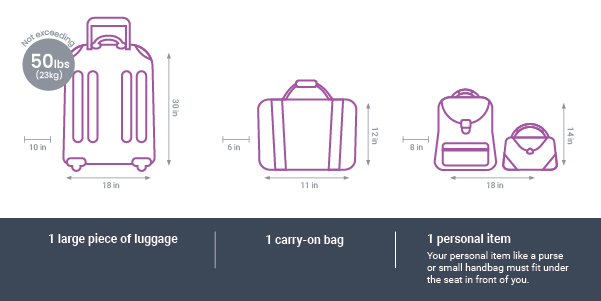
.jpg?width=2501&height=1251&name=Luggage%20Restrictions%20purple%20(2).jpg)
